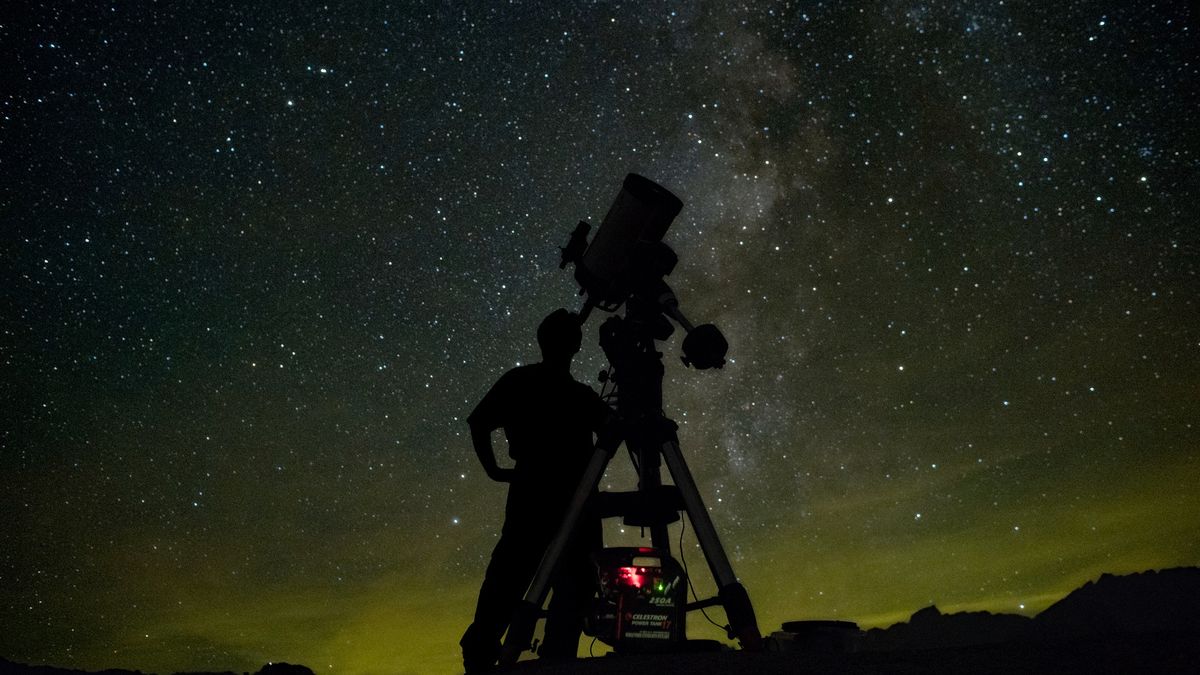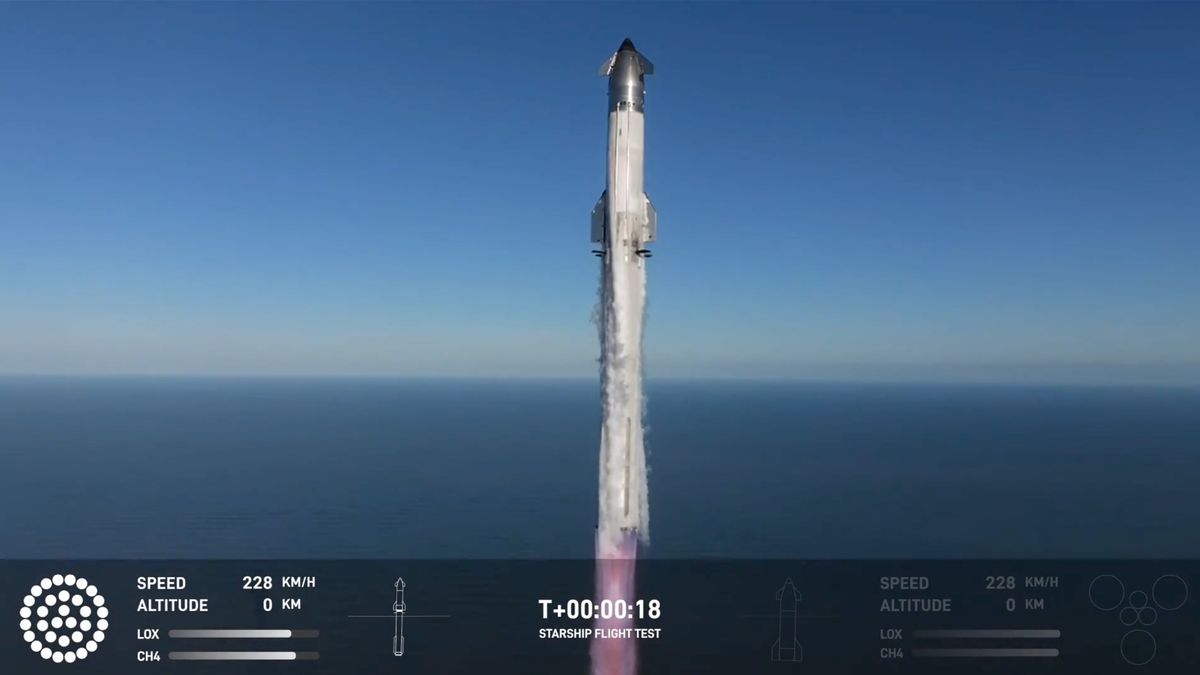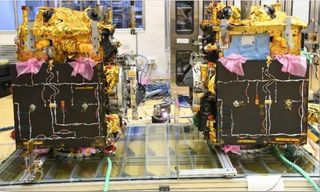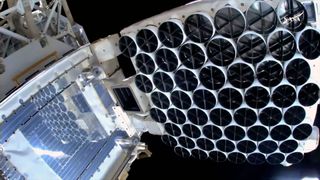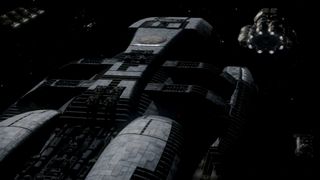We like to think of land as a fairly static thing, considering that’s where we spend the majority of our lives. And to think that the ground is ever-changing, well, that’s a bit unsettling. But the reality is land is always changing — perhaps nowhere more so than at the Kumani Bank mud volcano, also known as Chigil-Deniz, some 15 miles (25 km) off the coast of Azerbaijan in the Caspian Sea. The NASA Earth Observatory has released a series of images taken with the Operational Land Imager (OLI) and…
Read MoreCategory: The Moon
Our moon
Space Force to march in Trump’s Jan. 20 inauguration, a 1st for the new military branch
On Monday (Jan. 20), the U.S. Space Force will participate in a presidential inauguration for the first time. Representing the military branch will be 45 Guardians, the official name for U.S. Space Force personnel, who work in a wide range of careers across the country. The 45 Guardians, who are volunteers, recently arrived at Joint Base Anacostia-Bolling, a large military installation in Washington, D.C., where they’ve been practicing drills for Monday’s inauguration of President-elect Donald Trump. They’ve come together with the Space Force Honor Guard, which was founded 17 months…
Read MoreMajor telescope makers hit by class action lawsuit over alleged price fixing
Skywatchers who purchased telescopes from leading suppliers may be entitled to a payment from a $32 million class action settlement. The settlement is a result of a lengthy legal saga involving telescope manufacturers controlled by Chinese family firms Synta Technologies and Ningbo Sunny, which, according to allegations in available documents, actively conspired to monopolize and divide up the U.S. amateur telescope market to fix prices and push out competitors. The brands covered in the class action include the popular Celestron, Meade, Olivon and Sky-Watcher telescopes, which have for years been…
Read MoreFAA requiring investigation into SpaceX Starship’s Flight 7 explosion
The U.S. Federal Aviation Administration (FAA) is requiring an investigation into what went wrong during the seventh-ever test flight of SpaceX’s Starship megarocket yesterday (Jan. 16). The launch, from SpaceX‘s Starbase site in South Texas, went well at first. Starship got off the pad successfully, and its two stages — the Super Heavy booster and Ship spacecraft — separated on time. And the giant booster came back to Starbase, where it was caught by the launch tower’s “chopstick” arms. Ship was less successful, however. The flight plan called for the…
Read MoreCenturies-old supernova guides James Webb Space Telescope through an interstellar gap
The spaces between stars in our galaxy are enigmatic realms filled with vast, diffuse clouds of gas and dust. These clouds tend to remain invisible — but the James Webb Space Telescope (JWST) has managed to capture one in a rare moment when it was lit up. Peering at a dusty pocket of our galaxy about 11,000 light-years away in the constellation Cassiopeia, the James Webb Space Telescope’s powerful infrared eyes watched as light from a centuries-old supernova illuminated interstellar material, warming it and causing it to glow. “This is…
Read MoreMajor milestone! India becomes 4th nation to dock satellites in orbit
India continues to prove out the abilities of its increasingly robust space program. The two satellites of the Indian Space Research Organization‘s (ISRO) Space Docking Experiment, or SpaDex, successfully met up in Earth orbit yesterday (Jan. 15), making India just the fourth country to pull off an in-space docking. The other three are all heavy hitters in the space game: the United States, Russia and China. “Spacecraft docking successfully completed! A historic moment,” ISRO said in an X post last night (Jan. 15). “Congratulations to the entire team! Congratulations to…
Read MoreAstronauts repair black hole observatory, inspect cosmic ray detector on ISS spacewalk
An X-ray observatory used to study neutron stars is “back in the black” and a cosmic ray detector is ready for possible future upgrades after two astronauts completed a spacewalk outside the International Space Station (ISS). Nick Hague worked to repair the Neutron star Interior Composition Explorer, or NICER, mounted to the outside of the space station, before he and Expedition 72 commander Suni Williams inspected the Alpha Magnetic Spectrometer (AMS) during a six-hour EVA (extravehicular activity) on Thursday (Jan. 16). Hague and Williams began the spacewalk at 8:01 a.m.…
Read MoreSpace Mountain at 50: Five nods to NASA from the Walt Disney World ride
“We astronauts are here today to salute all those who made our trip into space possible. They have permitted us to see the Earth as a precious blue jewel in the blackness of space. Now all of us may enjoy this sense of wonder because of Walt Disney.” With those words 50 years ago today (Jan. 15), Apollo 15 moonwalker Jim Irwin opened Space Mountain at Walt Disney World’s Magic Kingdom in Florida. Later to be reproduced at other Disney theme parks, this was the original — the first roller…
Read MoreBattlestar Galactica at 20: the show that reinvented space opera
If you wanted to assemble a time capsule of late 1970s pop culture, the original “Battlestar Galactica” would be a good place to start. Not only was it an unashamed attempt to cash in on the record-breaking success of “Star Wars” — to the extent that George Lucas’s lawyers wrote some very angry letters — the disco stylings of Glen A. Larson’s big-budget TV space opera tie it to a very specific time in history. The show’s wholesome family values, robot dogs, and kitschy, “Saturday Night Fever”-esque fashions always jarred…
Read MoreThe 7 best total solar eclipses of the next 10 years
Eclipse-watchers have plenty to look forward to in the next decade. Over the next ten years, Earth will experience seven total solar eclipses that will see skywatchers in Australia, Egypt, Spain and Sudan peer up at the central shadow of the moon. The first of these eclipses will take place on Aug. 12, 2026, and the final one will be on March 20, 2034, with the maximum durations of totality of each total solar eclipse ranging from 1 minute, 8 seconds to 6 minutes, 23 seconds. Here are the important…
Read More

